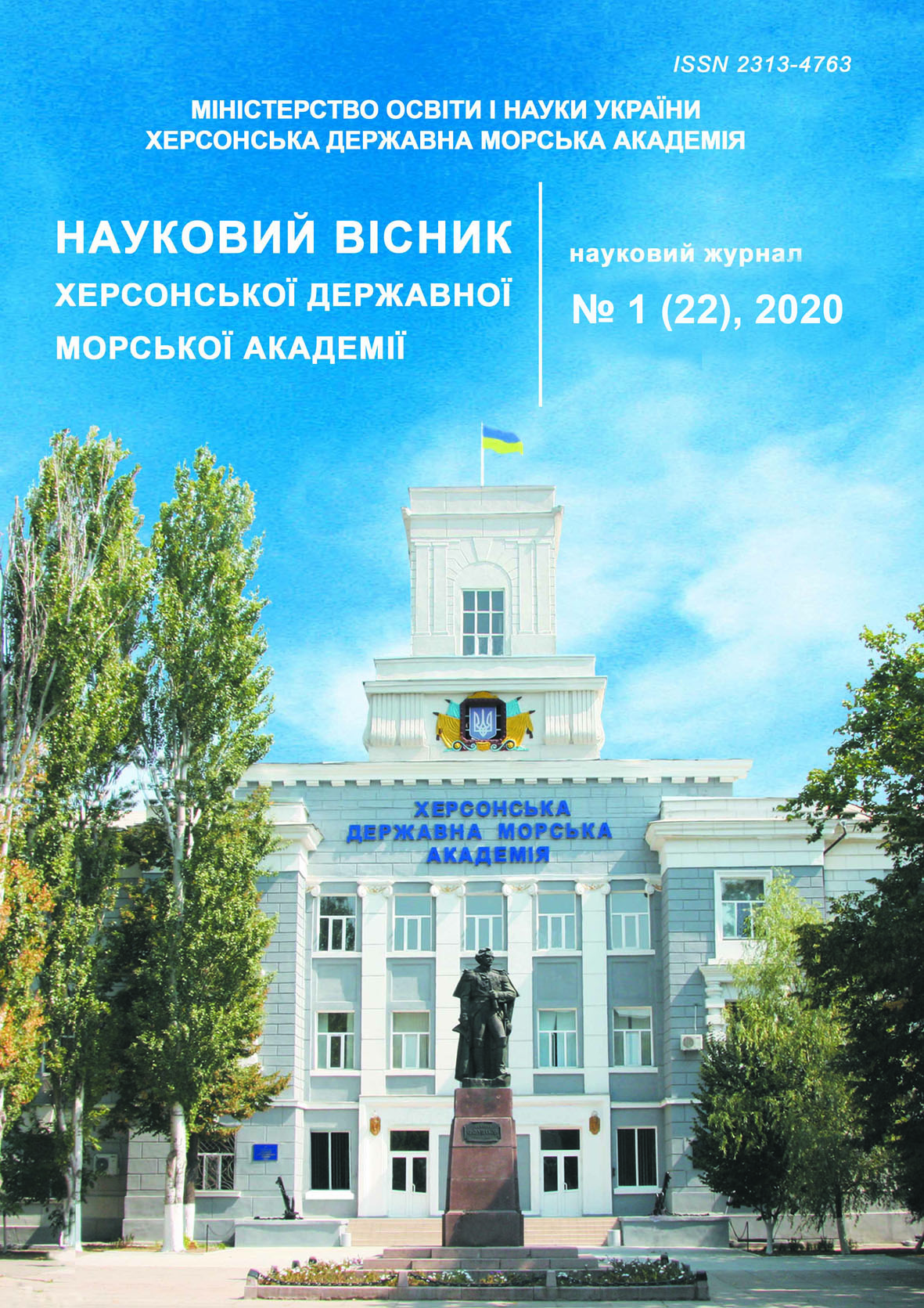MODELING THE DIVERGENCE OF SHIPS IN THE DECISION SUPPORT SYSTEM OF THE NAVIGATOR
10.33815/2313-4763.2020.1.22.045-053
Abstract
The aim of the study is to develop modern conceptual approaches to the construction of decision support systems in navigation, to determine the theoretical and practical foundations for creating such systems and priority ways of their practical implementation. From the analysis of recent publications, it has been revealed that the widespread use of new information technologies and modern technical means of navigation leads to an increase in the detail of the present navigation situation, but at the same time its assessment becomes more complicated and the time available to the navigator for analysis and development of the necessary control decision is reduced. For this reason, the development of decision support systems (DSS) for the navigator, which use new meaningful models of the hazard identification process for navigating a ship in the event of prerequisites for an emergency, is an urgent task of the present time. The creation of such systems will reduce the negative impact of the human factor on the processes of ship traffic control. The article develops theoretical and practical foundations for constructing a DSS for a navigator, taking into account the peculiarities of the movement of ships, the process of human interaction with technical means of navigation. The article develops theoretical and practical foundations for constructing a DSS for a navigator, taking into account the peculiarities of the movement of ships, the process of human interaction with technical means of navigation. New mathematical models of control over the process of divergence of ships are proposed. The classification of ships according to the degree of danger is carried out, depending on the change in the angle of the line of their relative movement. Criteria for a quantitative assessment of the hazard level of a ships based on the analysis of changes in the angle of the line of its relative motion are presented. The results obtained are the basis for further increasing the efficiency of the functioning of the ergatic systemи«man - technical means of navigation» and the comprehensive implementation of the achievements of new information technologies in the ship control processes.
References
2. Maltsev A. S. (2006). Five steps to assure navigational safety. Collection of IAMU scientific works. Dalian : Maritime University Press, 170-179.
3. Mitropoulos E. (2007). E-navigation: a global resource. Seaways. The Nautical Institute. 7–9.
4. Mal’cev A. S. & Starikov I. M. (2002). Psihologicheskie aspekty manevra poslednego momenta. Sudovozhdenie: sb. nauchn. Trudov, 4, 64–81.
5. Sherstyuk V. G., Ben’ A. P. (2008). Gibridnaya intellektual’naya SPPR dlya upravleniya sudnom. Iskusstvennyj intellekt, Vol. 3, 490–499.
6. Lisowski J. (2005). Game control methods in navigator decision support system. The Archives of Transport, 3–4, Vol. XVII, 133–147.
7. Lopez Eloy, Velasc Francisco J., Moyano Emiliano, Rueda Teresa M. (2004). Full-scale manoeuvering trials simulation. Journal of Maritime Research, Vol. I. No. 3, 37–50.
8. Mal’cev A. S. Golikov V. V. & Zhukov D. S. (2008). Obobshchennyj kriterij ocenki soglasovannosti sistemy upravleniya i harakteristik cheloveka-operatora. Vіsnik Odes’kogo nacіonal’nogo mors’kogo unіversitetu : zb.nauk.prac’. Vol.24. Odesa: ONMU. 65–75.
9. IMO SUB-COMMITTEE ON SAFETY OF NAVIGATION. 58th session. Agenda item 6. NAV 58/WP.6/Rev.l. E-NAVIGATION. July 2012.
10. Lisowski J. (2005). Mathematical modeling of a safe ship optimal control process. Polish Journal of Environmental Studies, Vol. 14. 68–75.






